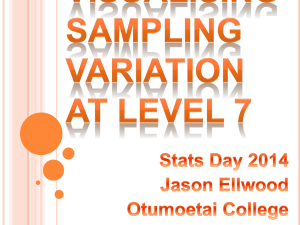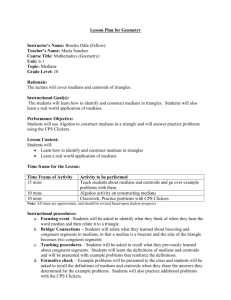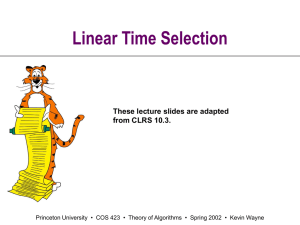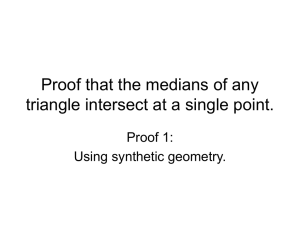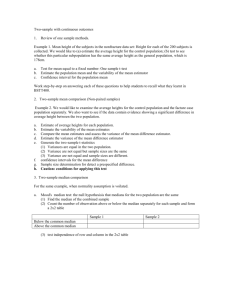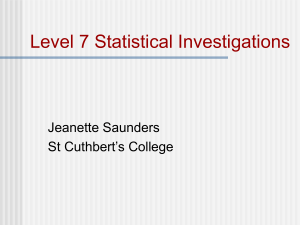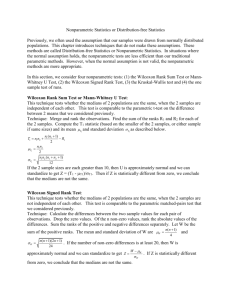Outline-for-Thought-Experiments
advertisement
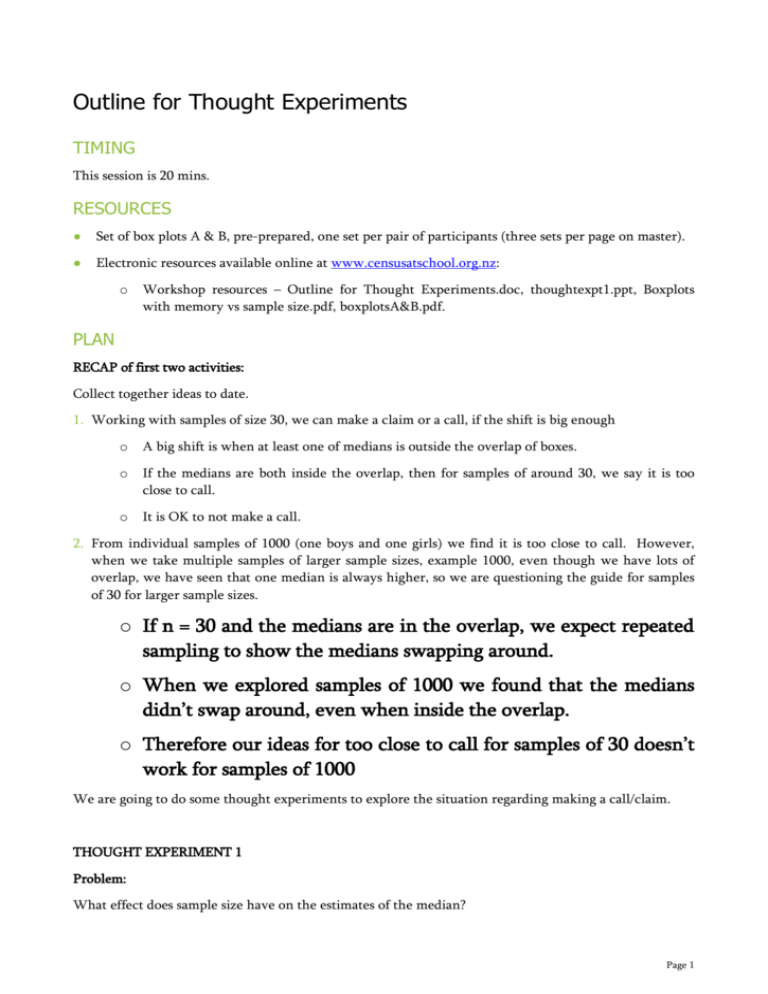
Outline for Thought Experiments TIMING This session is 20 mins. RESOURCES ● Set of box plots A & B, pre-prepared, one set per pair of participants (three sets per page on master). ● Electronic resources available online at www.censusatschool.org.nz: o Workshop resources – Outline for Thought Experiments.doc, thoughtexpt1.ppt, Boxplots with memory vs sample size.pdf, boxplotsA&B.pdf. PLAN RECAP of first two activities: Collect together ideas to date. 1. Working with samples of size 30, we can make a claim or a call, if the shift is big enough o A big shift is when at least one of medians is outside the overlap of boxes. o If the medians are both inside the overlap, then for samples of around 30, we say it is too close to call. o It is OK to not make a call. 2. From individual samples of 1000 (one boys and one girls) we find it is too close to call. However, when we take multiple samples of larger sample sizes, example 1000, even though we have lots of overlap, we have seen that one median is always higher, so we are questioning the guide for samples of 30 for larger sample sizes. o If n = 30 and the medians are in the overlap, we expect repeated sampling to show the medians swapping around. o When we explored samples of 1000 we found that the medians didn’t swap around, even when inside the overlap. o Therefore our ideas for too close to call for samples of 30 doesn’t work for samples of 1000 We are going to do some thought experiments to explore the situation regarding making a call/claim. THOUGHT EXPERIMENT 1 Problem: What effect does sample size have on the estimates of the median? Page 1 Plan: Using thoughtexp1.ppt “take” multiple samples of 30 girls heights and mark the medians on whiteboard. Do this for five samples. Analysis: Questions ● What do you notice? ● If more samples were taken, what would you expect? Repeat for samples of 100 and samples of 1000. Write I notice statements from this experiment: ● n = 30 Median ranges from ______ to ______ ● n = 100 Median ranges from ______ to ______ ● n = 1000 Median ranges from ______ to ______ Show what happens for many more samples. Use Boxplots with memory vs sample size.pdf. Write I notice statements from this experiment: ● n = 10 Median ranges from ______ to ______ ● n = 100 Median ranges from ______ to ______ ● n = 1000 Median ranges from ______ to ______ Conclusion: The larger the sample size, the less variation in the medians. That might be why the guide fell over or part of the reason. It seems that SAMPLE SIZE MATTERS! THOUGHT EXPERIMENT 2 Problem: What else effects the decision whether to make a call or not? Plan: Data has been collected in two situations; A and B, and box-plots are given (boxplotsA&B.pdf). Analysis: ● Would you make a call/claim for Situation A? o ● Yes / No Why / Why not? Would you make a call/claim for Situation B? Yes / No Page 2 o ● ● Why/ Why not? (not for samples of 30) Look at Situation B: o Do you think you could make a call/claim if the sample size was bigger? o How big? Yes / No Look at Situation A and B: o What is similar about the graphs? o What is different about the graphs? From this part of the experiment, we are working towards the idea that both the difference between the sample medians and the spread have something to do with being able to make a call/claim or too close to call. Conclusion: COLLECTING IDEAS FROM THE THOUGHT EXPERIMENTS 1. Different size samples show different levels of variation for sample medians. The larger the sample, the smaller the variation in medians and the smaller the sample, the larger the variation in the medians. 2. From the second thought experiment, we have the idea that both the difference in medians and the overall visual spread or the boxes influence whether we would make a claim. 3. So let’s pull these ideas together and find that they form the basis of the following guides for making a claim, when considering different sample sizes, not just samples of 30. These guides work for different sample sizes (previous guide only for n = 30). You can make a call with A because there is no overlap, but not B, and someone said, but the medians are the same, and someone else said but the spread is different, but the sample size might matter. If the sample size was 30 for both then they would make a call on A but not on B. – student ideas Page 3
